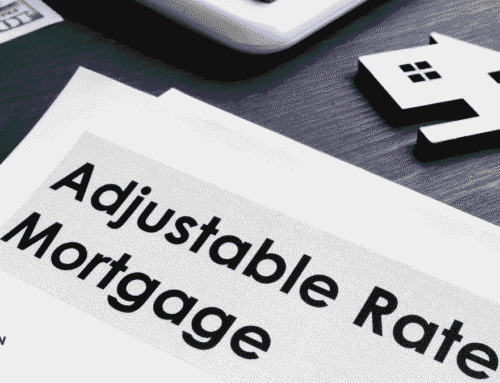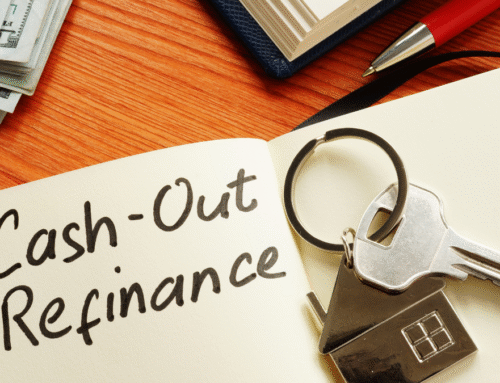DSCR Loan Case Study: Two Duplexes on One Lot (Cleveland, Ohio) – From Quote to Closing
DSCR Loan Case Study Analysis
I’ve purchased over 120 rental properties in the U.S., and I’ve used DSCR loan financing to purchase and/or refinance all of my deals. Today, a big part of my real estate business involves helping other non-US residents build and finance their own rental property portfolios in the United States. Let me tell you, your financing strategy deserves as much consideration as market and property selection!
This client came to me with around $120,000 USD, and wanted to buy a single family rental. We put together a financing strategy that allowed them to use the same capital to purchase 2 turnkey duplex buildings in Cleveland, Ohio. I’ll walk you through the entire process we used to plan, choose, and stress test our DSCR loan strategy for this client.
JOIN MY VIP PRIORITY INVESTOR LIST
Get the Best DSCR Loan Deals and Off-Market DSCR-Ready Investment Properties in Your Inbox Every WeekYES! ADD ME TO THE PRIORITY INVESTOR LIST
Deal Snapshot: Two Duplexes (Cleveland, Ohio)
| Asset | Two duplex buildings on one parcel (4 units total; 5 bedrooms; ~3,015 sq ft) |
|---|---|
| Location | Cleveland, Ohio |
| Occupancy | All units leased at closing |
| Rents & Utilities | Gross rent $3,320/mo; tenants pay all utilities; landlord covers lawn care; no HOA |
| Purchase & Value | Purchase price $340,000; Appraised Value $340,000 |
| Taxes & Insurance | Property taxes $2,360/yr; Insurance $1,025/yr (escrowed) |
| Loan Program | DSCR, 30-year fixed, fully amortizing; 70% LTV; rate 6.75%; lender DSCR floor 1.00× |
| Loan Amount | $238,000 |
| Closing Costs | $20,400 total incl. $2,550 points, $2,300 origination, $1,500 legal, $600 appraisal, $2,550 lender’s title policy; seller credit ($10,000) → net closing costs buyer: $10,400 |
| Property Management | 10% of collected rent |
| Reserves Policy | Target 10% maintenance reserve; allocate 100% of net cash flow to reserves for first 5 years (no separate vacancy/CapEx lines) |
| Hold & Condition | Buy & hold (30 years); no repairs required at close |
Estimated day-one DSCR ≈ 1.82× based on $3,320/mo rent and ~$1,825.75/mo PITIA.
Financing Strategy & Game Plan
This was a turnkey investment property which had been fully-renovated, and all 4 units were occupied on 12-month lease agreements. Our approach was simple: choose a conservative loan structure that maximizes pre-approval odds, smooths cash flow, and holds up if interest rates wobble in the future. With that in mind, we chose a fixed rate vs ARM DSCR loan for this client. Here’s what we locked in:
- Leverage: 70% LTV to keep pricing sharp and DSCR strong on day one.
- Term: 30-year fixed, fully amortizing for stability.
- Rate: 6.75% after a modest buydown (from ~7.00%). See: DSCR Loan Rates.
- Escrows: Taxes & insurance escrowed to reduce monthly variance.
- Operations: Tenants pay utilities; we budget lawn care and route 100% of early cash flow to reserves.
Why this mix? A slightly lower rate + conservative LTV improves DSCR coverage and pricing without relying on optimistic rent growth. With all units leased, fixed P&I at 6.75% gives predictable cash flow while we build reserves. Learn how to improve your DSCR ratio, and check out my DSCR pre-approval checklist.
| Monthly PI @ 6.75% | $1,543.66 |
|---|---|
| Taxes + Insurance (escrow) | $282.08 |
| PITIA (Total) | $1,825.75 |
| DSCR (Rent $3,320 ÷ PITIA) | ≈ 1.82× |
Note: We skipped interest-only to avoid a future payment jump and prepay tradeoffs, prioritizing durable coverage and simpler asset management.
Acquisition Economics & Capital Stack
| Purchase Price | $340,000 |
|---|---|
| Loan (70% LTV) | $238,000 |
| Down Payment (30%) | $102,000 |
| Closing Costs (gross) | $20,400 |
| Seller Credit | ($10,000) |
| Net Closing Costs | $10,400 |
| Total Cash to Close | $112,400 |
Notes: Closing costs include $2,550 in points (rate buydown), $2,300 origination, $1,500 legal, $600 appraisal, and $2,550 lender’s title. Taxes/insurance are escrowed.
Year-1 Pro Forma: Income, Expenses & Cash Flow (Monthly)
| Gross Scheduled Rent | $3,320 / mo |
|---|---|
| Property Management (10%) | ($332) / mo |
| Maintenance Reserve (10%) | ($332) / mo |
| Net Op Income (pre-PITIA) | $2,656 / mo |
| Principal & Interest @ 6.75% | $1,543.66 / mo |
| Taxes + Insurance (escrow) | $282.09 / mo |
| PITIA | $1,825.75 / mo |
| Pre-Tax Cash Flow (before lawn care) | ≈ $830.25 / mo (≈ $9,963 / yr) |
| DSCR (Bank View: Rent ÷ PITIA) | ≈ 1.82× |
|---|---|
| Cash-on-Cash (Yr-1, before lawn) | ≈ 8.9% (=$9,963 ÷ $112,400) |
Assumptions & notes: Tenants pay all utilities; landlord pays lawn care (not included above. We earmark 100% of net cash flow to reserves in the first 5 years to accumulate for vacancy and CapEx.
Underwriting & DSCR Qualification
DSCR lenders will verify all of the pertinent information relating to the property and borrower. We structured the file to clear the lender’s DSCR coverage and leverage tests with room to spare. All units were leased at closing, so we qualified on actual rent roll (no 1007 appraisal needed). Taxes and insurance were escrowed, and we selected a 30-year fixed term to keep cash flow predictable.
DSCR math (bank view): DSCR = Gross Rent ÷ PITIA. With $3,320/mo rent and $1,825.75/mo PITIA, DSCR ≈ 1.82×.
| Gross Rent (All Units) | $3,320 / mo (leased at close) |
|---|---|
| Principal & Interest @ 6.75% | $1,543.66 / mo |
| Taxes + Insurance (Escrow) | $282.09 / mo |
| PITIA | $1,825.75 / mo |
| Calculated DSCR | ≈ 1.82× (lender floor: 1.00×) |
| To meet 1.00× DSCR | Rent ≈ $1,825.75 / mo |
|---|---|
| To meet 1.20× DSCR | Rent ≈ $2,190.90 / mo |
| To meet 1.25× DSCR | Rent ≈ $2,282.19 / mo |
Notes: LTV was set at 70% for pricing and coverage strength. Program reserve requirements were met; actual amounts vary by lender and file specifics.
Pro Tip: If your numbers are tight, improve DSCR before you lock terms. Verify taxes/insurance, consider interest-only or an ARM, and revisit rents. See my step-by-step guide: How to Improve Your Rental Property DSCR.
Sensitivity: What If Rates/Rents/Expenses Shift?
Before we locked in, we stress-tested the deal against rate, rent, and expense moves. The base file still clears common DSCR tiers with cushion, but this table shows how coverage and cash flow react to typical shocks.
| Scenario | PITIA | DSCR | Est. Cash Flow / mo |
|---|---|---|---|
| Base case (6.75% P&I; current T&I) | $1,825.75 | 1.82× | $830 |
| Rate +50 bps (→ 7.25%) | $1,905.66 | 1.74× | $750 |
| Rent −5% | $1,825.75 | 1.73× | $697 |
| Taxes & Insurance +10% | $1,853.95 | 1.79× | $802 |
| Combo: Rate +50 bps & Rent −5% | $1,905.66 | 1.66× | $618 |
Takeaway: Even with a 50 bps rate shock or a 5% rent dip, the file remains >1.60× DSCR. We still allocate 100% of Yr-1 cash flow to reserves to absorb unknowns (lawn care, turns, small capital items).
Method: Cash flow shown before lawn care; management and maintenance reserves modeled at 10% of collected rent each.
Operational Plan & Risk Controls (First 90 Days)
Day-one operations were set up for low friction and relatively passive day-to-day involvement for our investor. Tenants pay all utilities; we handle lawn care and route 100% of net cash flow to reserves for the first five years. Professional management runs rent, turns, notices, and reporting.
| Gross Rent | $3,320 |
|---|---|
| Property Management (10%) | ($332) |
| Maintenance Reserve (10%) | ($332) |
| PITIA (Escrowed T&I) | ($1,825.75) |
| Net Cash Flow (pre-lawn) | ≈ $830.25 / mo → allocated to reserves |
Note: Add your local lawn contract cost to refine monthly surplus; we intentionally budgeted this outside the table and saved all remaining cash to reserves.
Why heavy reserves? Surprises happen in real estate (drains, roofs, panels, vacancy). Building a cash surplus early creates a safety net. After owning over 120+ rentals, I no longer use guesswork and assumptions for vacancy and CapEx reserves. I simply allocate 100% of cash flow to reserves for the first 5 years. We are aiming to build a portfolio of self-funding assets, so we treat our properties like and asset, not an ATM.
First-90-Days Checklist
- Property management: PM agreement executed. Ongoing PM oversight (monthly statements, delinquency, renewals).
- Collections & turns: Verify leases on file, deposits recorded, renewal schedule, and turnover SOPs.
- Vendors: Yard workers, handyman, plumber, electrician, HVAC. We have rate cards on file, response SLAs are set.
- Insurance: Landlord policy bound; replacement-cost confirmed; add PM as additional insured if needed.
- Compliance: Local rental/lead-safe/licensing status verified; calendar any inspections.
- Banking: Dedicated operating account; escrow matches lender statements; reserve sub-account funded monthly. Don’t comingle funds!
- Bookkeeping: Classify by unit/building; record accurate cost basis, retain invoices, statements, and wire receipts. The best ‘tax hack’ is good record keeping and a knowledgeable CPA/EA.
KPI Watchlist (Quarterly)
- Delinquency: <3% of gross; action plan at day 5 / day 10. Know the process at county level!
- Maintenance: Keep <10% of rent on average; watch repeat tickets by unit. Audit expenses on a case-by-case basis.
- Vacancy/turn time: Aim <30 days; pre-market renewals 60 days out.
Risk controls: No owner draws for 60 months, pre-approved vendor caps for repairs (e.g., $500), PM escalation path, annual insurance/tax review, and semi-annual exterior inspections. If possible, annual interior inspections also. 3-monthly tenant communication to identify unreported/unresolved issues.
Cash at Close, Reserves & True Cost
Here’s the final wire at closing, the required lender reserves (6 months PITIA), and the total liquid capital needed to document for approval. Note that reserves are not paid to the lender; they must be verifiable funds pre-close.
| Purchase Price | $340,000 |
|---|---|
| Loan Amount (70% LTV) | $238,000 |
| Down Payment (30%) | $102,000 |
| Total Closing Costs (incl. points) | $20,400 |
| Seller Credit | ($10,000) |
| Cash to Close (Net Out-of-Pocket Wired) | $112,400 |
| PITIA (Monthly at 6.75%) | $1,825.75 |
|---|---|
| Required Reserves (6 × PITIA) | $10,954.50 |
| Cash to Close (wired) | $112,400 |
|---|---|
| Plus: Reserves on Hand (6 mo PITIA) | $10,954.50 |
| Total Liquid Capital Required to Document | $123,354.50 |
| Discount Points (buydown to 6.75%) | $2,550 |
|---|---|
| Origination Fee | $2,300 |
| Legal / Doc Prep | $1,500 |
| Appraisal | $600 |
| Lender’s Title Insurance | $2,550 |
Rate buydown payback: Paying $2,550 in points lowered the interest rate from ~7.00% to 6.75%. Monthly P&I fell by ≈$39.76, so breakeven is ≈64 months. For a 30-year hold, that penciled; for a short flip/refi, it likely wouldn’t.
| Estimated Monthly Surplus (pre-lawn) | ≈ $830.25 |
|---|---|
| Annualized Surplus | ≈ $9,963 |
| Simple Cash-on-Cash (Annual Surplus ÷ Cash to Close) | ≈ 8.9% |
Note: We elected to send 100% of Yr-1 surplus to reserves (no owner draws) to build reserves and absorb unknowns.
Sensitivity, What-Ifs & Exit Plan
Before we closed, we modeled a few what-if scenarios around rate moves, rents, and taxes/insurance. The goal was simple: confirm the deal still works if conditions change. Baseline assumptions are the final loan terms (6.75% fixed, fully amortizing) and current leases.
| Scenario | Monthly PITIA | DSCR (×) | Notes |
|---|---|---|---|
| Baseline (6.75% fixed) | $1,825.75 | 1.82× | As-closed numbers (P&I + taxes + insurance). |
| Rate −0.50% (6.25%) | $1,747.49 | 1.90× | Refi potential if market improves. |
| Rate +0.50% (7.25%) | $1,905.66 | 1.74× | Stress case; still above 1.20×. |
| Rents −5% | $1,825.75 | 1.73× | Renewal softening or minor vacancy drag. |
| Rents +5% | $1,825.75 | 1.91× | Market-rent alignment / value-add. |
| Taxes & Insurance +10% | $1,853.96 | 1.79× | Reassessment / premium creep. |
| Taxes & Insurance +20% | $1,882.16 | 1.76× | High-stress case still clears common DSCR floors. |
| Interest-Only (hypothetical) | $1,620.83 | 2.05× | Illustrative IO for DSCR headroom; our loan is fully amortizing. |
Takeaway: Even with rate or expense pressure, DSCR remains comfortably > 1.20×. That margin protects cash flow and future DSCR cash out refinance options.
Exit & Hold Plan
- Primary plan: 30-year hold with no owner draws in the first 5 years; direct all surplus to reserves and targeted capex.
- Refi triggers: Consider refi if a net rate drop (after points & fees) shortens buydown breakeven to < 48–60 months and prepay terms allow.
- Prepay awareness: Many DSCR programs include step-down prepay (e.g., 5-4-3-2-1). Match any exit to the prepay calendar; verify curtailment allowances.
- Risk controls: Maintain ≥ 6–9 months of actual PITIA in reserves, annual insurance shop, appeal tax reassessments if warranted, and schedule proactive unit turns on vacancy.
Lessons Learned & Playbook You Can Reuse
This deal worked because we controlled the four levers that move DSCR: rent reality, PITIA accuracy, reserves, and timelines. Here’s exactly what I’d repeat (and avoid) next time.
1) Submarket > headline metrics
- Use street-level rent comps (same bed/bath, school zone, condition); ignore citywide averages.
- Confirm taxes at investor rate post-sale; reassessments can crush cash flow (and DSCR for refi).
2) Underwrite like the lender
- Target ≥ 1.20–1.25× DSCR on realistic PITIA (tax + insurance quotes in writing).
- Stress test rate +50 bps and Taxes/Insurance +10–20%; the deal should still clear the DSCR floor.
3) Lock insurance early
- Bind a landlord policy before appraisal if possible; use the exact premium when using the DSCR calculator.
- Review wind/hail/flood exposures and deductibles; shop around annually.
4) Reserves win approvals
- Have ≥ 6 months PITIA liquid (lender requirement on this file).
- Self-impose an extra 3–6 months operational buffer for comfort. Liquid cash solves problems!
5) Points math, not vibes
- Break-even months ≈ cost of points ÷ monthly payment savings.
- Only buy points if hold period > break-even and prepay allows early exit without penalty.
6) Documents that speed underwriting
- Executed leases + rent roll; photo IDs; entity docs; 90–120 days bank statements (funds & reserves).
- Insurance binder, tax bill, prior title policy (if refi), and escrow wiring details verified by phone.
Copy-paste checklist for your next DSCR offer:
- Street-level rent comps (3–5) and insurance quote in writing.
- DSCR calc (base, +50 bps, TI +10–20%).
- Proof of funds for down + 6 months PITIA reserves.
- Pre-approval email from lender/broker with target terms.
DSCR Investor Toolkit & Resources
Fundamentals & Comparisons
Tools, Rates & Lenders
- DSCR Calculators (Payment, DSCR & Cash-Out)
- Current DSCR Loan Rates
- Best DSCR Lenders (2025)
- DSCR Pre-Approval Checklist
Strategy, Risk & Special Cases
GET PRE-APPROVED FOR THE BEST DSCR LOAN RATE
Start your real estate investment journey today, and get pre-approved for the Best DSCR Loan Interest Rates from market leading lenders!
“Having personally invested in over 120 US rental properties from overseas, I know the true value of getting the right advice and support.
David Garner – Cashflow Rentals

GET PRE-APPROVED FOR THE BEST DSCR LOAN INTEREST RATES TODAY!
Start your real estate investment journey today get pre-approved for the best DSCR loan interest rates from market leading lenders!
“Having personally invested in over 120 US rental properties from overseas, I know the true value of getting the right advice and support.
David Garner – Cashflow Rentals












